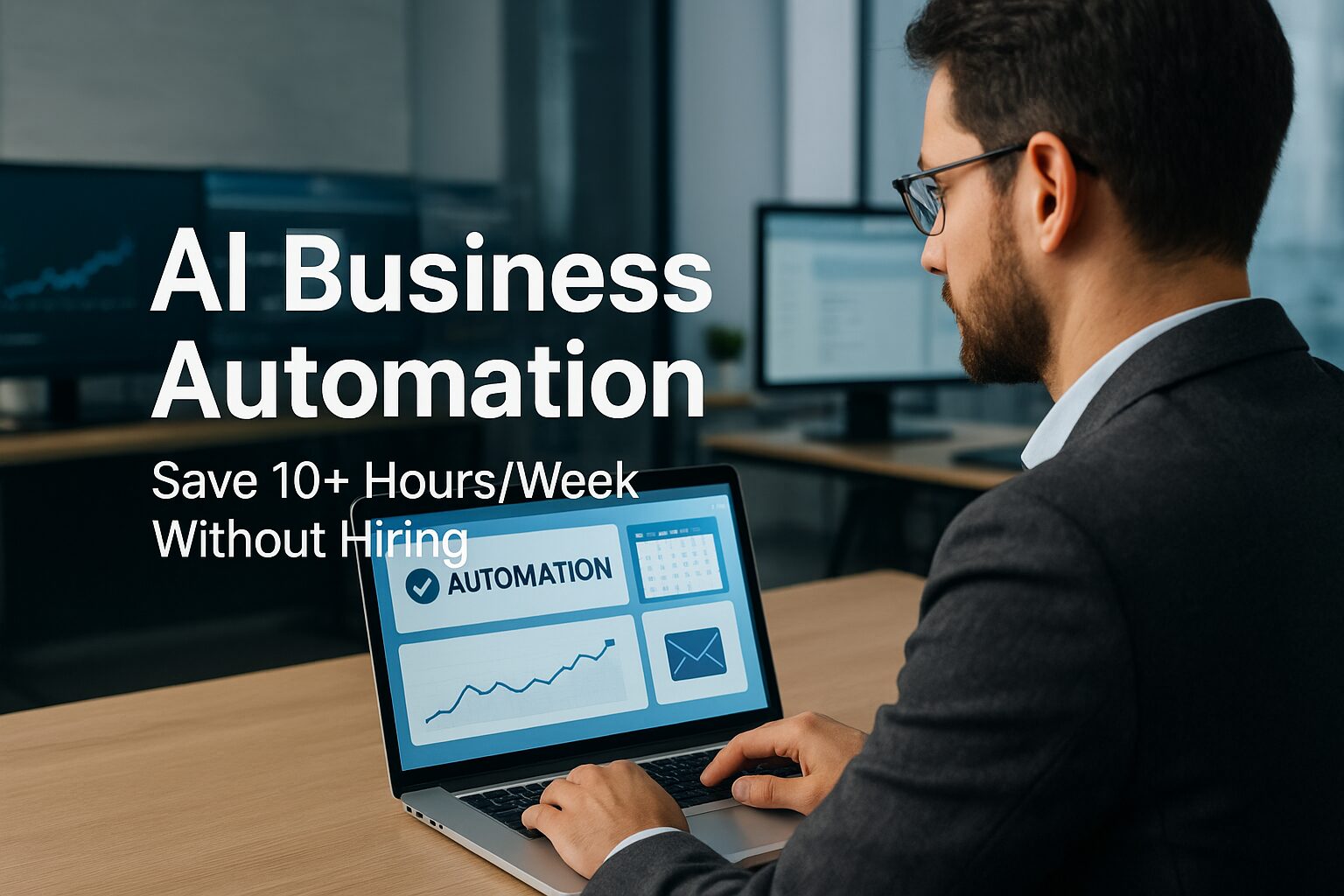This guide focuses on practical, low-cost automation strategies using widely available tools. No coding experience required. Always comply with local labor laws, data protection regulations, and software licensing terms.
Why Business Automation Matters Now
In English-speaking economies like the US, UK, Australia, Canada, and Singapore, labor costs continue to rise while customer expectations for speed and personalization keep increasing. For small or lean teams, this creates a constant pressure to “do more with less.”
Challenges faced by lean teams:
- Labor cost inflation: Average hourly wages in developed markets are at historic highs.
- Remote coordination gaps: Multiple time zones and asynchronous communication slow response times.
- Customer expectations: 24/7 support and instant answers are now baseline.
- Competitive pressure: Larger teams and AI-enabled competitors move faster.
Without automation, repetitive tasks like invoicing, scheduling, and responding to common queries drain hundreds of hours per year—hours that could be spent on strategic growth activities.
The 3-Pillar Automation Framework
1. Process Mapping
Before buying software, identify exactly where time is being lost.
- Track tasks for one week and log every repetitive step.
- Mark each task as:
a) Repetitive
b) Rules-based
c) Not requiring complex judgment
High-potential processes for automation:
- Lead capture & qualification
- Appointment scheduling
- Social media content distribution
- Invoice creation & payment reminders
- Customer onboarding sequences
- FAQ/chatbot support
Example:
A small marketing agency mapped its onboarding process and discovered 7 manual steps, from sending the welcome email to creating client folders. Automating these saved 4 hours per new client.
2. Tool Selection
Choose tools that integrate well with your existing stack and offer clear ROI. Avoid “shiny object syndrome” where you buy software you don’t fully use.
Customer Support:
- Zendesk + AI Answer Bots ($49+/month): Handles 60–80% of FAQs.
- Intercom Fin AI ($59+/month per seat): Learns from your help docs to provide accurate answers.
Sales & Marketing:
- HubSpot + AI Content Assistant (free tier to $800/month): Creates personalized emails and blog outlines.
- Jasper or Copy.ai ($39–$99/month): Generates ad copy, social posts, and product descriptions.
Operations & Admin:
- Zapier + OpenAI API ($20–$49/month): Connects apps, triggers AI actions, automates reports.
- Calendly + AI Scheduling (starts free): Suggests optimal meeting times based on priorities.
Finance:
- QuickBooks + AutoEntry ($12–$30/month): Auto-extracts data from invoices.
- Stripe + AI Forecasting (varies): Predicts cash flow trends from past data.
3. Rollout & Optimization (90-Day Plan)
0–30 Days:
- Identify 2–3 quick-win processes.
- Choose tools with minimal setup.
- Train team members with short SOP videos.
31–60 Days:
- Track KPIs: time saved, error reduction, customer satisfaction.
- Automate secondary processes like reporting or follow-ups.
- Document workflows for consistency.
61–90 Days:
- Build a dashboard to monitor all automations.
- Layer in AI quality checks (e.g., sentiment analysis on replies).
- Reinvest saved time into sales or product development.
Cost & ROI Calculation
Example for a 5-person team:
- Tool stack: $500/month
- Hours saved: 50/month
- Hourly value: $50/hour
- ROI: (50×$50) – $500 = $2,000 net gain per month
Over a year, that’s $24,000 in labor value, without hiring a single extra person.
Risk Management & Compliance
Data Privacy:
- Ensure GDPR/CCPA compliance.
- Avoid storing sensitive customer data in unsecured tools.
Over-Automation:
- Keep human checkpoints in high-value interactions.
- Balance efficiency with relationship building.
Vendor Lock-In:
- Choose tools with export features.
- Keep a “tool migration plan” documented.
Additional Real-World Case Studies
1) SaaS Startup (5-person team):
- Automated lead scoring, follow-up emails, and demo scheduling.
- Reduced sales cycle from 14 days to 7 days.
2) E-commerce Brand:
- Automated inventory alerts, abandoned cart campaigns, and supplier POs.
- Increased monthly revenue by 15% without hiring.
3) Boutique Consulting Firm:
- Automated research summaries and invoice follow-ups.
- Gained 20 extra billable hours per month.
4) Digital Marketing Agency:
- Automated client reporting via Google Data Studio linked with CRM.
- Saved 8 hours per account manager monthly.
5) Online Education Business:
- Automated student onboarding, grading notifications, and feedback requests.
- Increased course completion rates by 12%.
Expanded FAQ
Q: Can automation replace staff entirely?
A: Sometimes, but more often it augments existing roles, enabling each person to handle more work.
Q: Do I need coding skills?
A: No—most tools are no-code and use drag-and-drop interfaces.
Q: What if my team resists automation?
A: Start with low-risk, high-annoyance tasks. Show them the time saved.
Q: How do I choose between multiple tools?
A: Compare total cost, integration ease, and support quality—not just features.
Q: What’s the biggest automation mistake?
A: Automating a broken process—always streamline first, then automate.
Action Plan for This Week
- Track all repetitive tasks for 5 workdays.
- Pick 2 to automate first.
- Research AI tools with trial periods.
- Set measurable KPIs before rollout.
- Review performance after 30 days.
